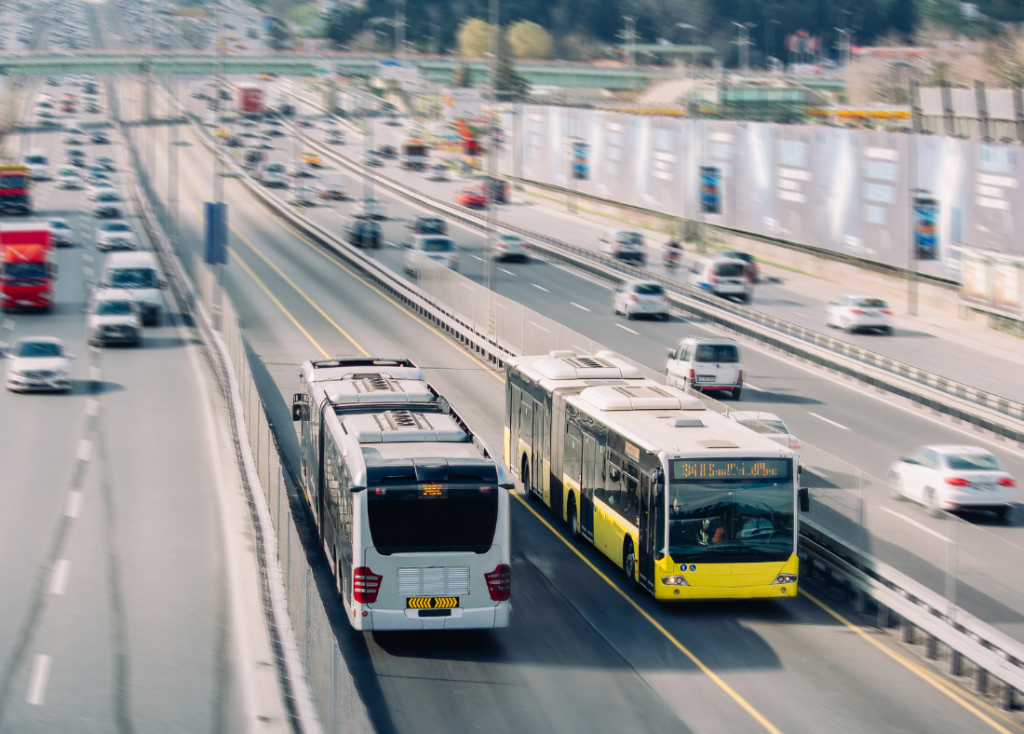By Bee Mittermiller

Public transportation is a critical lifeline for so many to get to work, school, healthcare, recreation, and homes. Every four years, San Diegans have the opportunity to directly influence the direction of development of transportation infrastructure in our region. The San Diego Association of Governments (SANDAG), is currently drafting the Regional Transportation Plan (RTP) for 2025, which maps out our transit future for 2050 and beyond.
The SanDiego350 Transportation Team follows and evaluates each iteration of the RTP as it is developed. Given that transportation in San Diego County accounts for 45-48% of greenhouse gas emissions, we want to make sure that SANDAG prioritizes strategies that give people choices for getting around in addition to private, gas powered cars and trucks while reducing the greenhouse gas emissions that have caused climate change. We need to see GHG emissions reduced as quickly as possible and as large as possible to avoid the worst impacts of climate change, and we are running out of time to do so.
The 2025 plan, while taking steps to mitigate our reliance on cars, still does not go far enough to improve our transportation system and reduce greenhouse gas emissions. We are calling upon SANDAG to modify the plan to take four key steps.
- Say NO to highway expansions. This includes adding “managed lanes,” as highway expansions in disguise. These only increase air pollution, VMT and cars on the road, with minimal effect on traffic reduction. Shift funding away from highways to public transit operations, including “last mile” microtransit, and safe walking and biking infrastructure.
- Reduce greenhouse gas emissions. Climate change is accelerating, and we are currently seeing the results. The RTP must move aggressively to plan for a 25% reduction in GHGs by 2035.
- Act proactively to guarantee permanent funding for the Youth Opportunity Pass program past 2026. No-cost transit passes for under-18 youth encourage significant participation in public transportation, help shift expectations for how San Diegans use transit, and invest in our region’s future. Given the current state of funding sources, SANDAG must take the lead on funding this critical program as a priority.
- 2035 is too late to wait for additional rapid bus and microtransit routes. SANDAG must accelerate the timeline and prioritize the Environmental Justice communities that need services the most. Plus, prioritize 24-hour service, frequency improvements, and improvements to transit stops (adding shade and ADA-accessible bathrooms) on the most popular routes to make the transit system fast, frequent, reliable, and accessible.
SANDAG’s Board of Directors, consisting of representatives from the county of San Diego and each of the 17 cities in the county, are responsible for approving regional plans and directing SANDAG staff to carry out the projects inside. It is especially important that the SANDAG Board members hear from us, since they make the ultimate decisions. There are three ways to give feedback:
- Make a written public comment via public comment form, phone call, or email using this toolkit.
- Email your representative on the SANDAG Board of Directors. A personal email can be even more impactful.
- Attend an in-person public comment event
We have until July 18th to submit comments. Together, we can make a difference!
